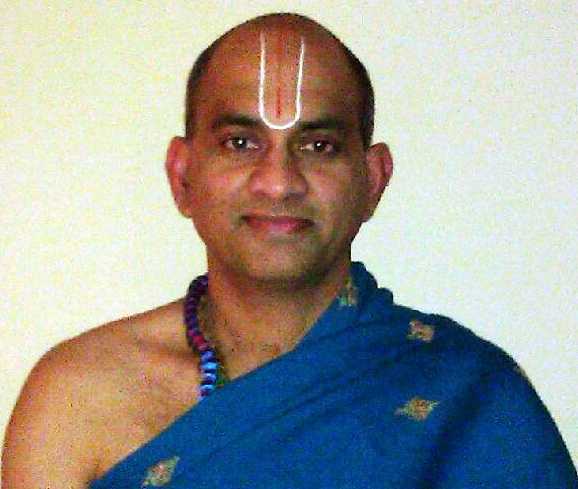What Is a Pooja and the Meaning of Its Components & Process

Contributed by: Pundit Srinivas Khedam
Pooja is the process of worshipping God with pure mind and heart. Pooja is done everyday at home and in temples. Those who know the procedure of pooja will do it at home everyday in the morning, and some people do it in the evening too. The duration of a basic pooja is anywhere from 5 minutes to 3 hours. It all depends upon the type of pooja one performs.
In the temples regular pooja is done in the morning and also in the evening. In addition to regular pooja many special poojas take place in the temples during the day and evening. Special poojas are performed on the days of festivals like Diwali, Ram Navami, Dassehra, Janmashtami, Ganesh Chathurthi, etc.
Mainly a pooja is of two types - A Simple Pooja and Detailed Pooja. The beauty is that God would be please by the quality of the pooja and not the time frame of the pooja. So, a devotee can receive the grace of God by performing either of these poojas according to his/her capacity.
A Simple Pooja
A simple pooja is a very basic one in which a devotee says some prayers glorifying God’s attributes and thanking Him for everything that he/she has been given in this life. These prayers are the in the form of chants and verses from the Holy Scriptures like the Vedas, Bhagavat Gita, Ramayana, Bhagavtham, etc. Depending on the length of the prayer, this pooja will take only 5 to 15 minutes. Every faithful Hindu performs this prayer everyday in the morning after the shower and before eating food. When performing this pooja usually a devotee stands or sits in front of God’s idol or picture.
A Detailed Pooja
In a detailed pooja a devotee worships God in several steps, and all these steps demonstrate his/her love and devotion to God. The duration for this pooja is anywhere from 30 min to 3 hours. A detailed poojas contains 16 services (Sanskrit: Shodasha Upachara) offered to God with love and devotion. These steps are similar to how we honor and treat our beloved guests during their visit to our place.
Though there are poojas that have less and more than 16 steps the “shodasha upachara” pooja is a standard practice in temples and also on special occasions.
The following is the meaning and a brief explanation of the 16 steps
1. Dhyanam (prayer)
To engage our mind, body into god. When we want to worship god or a form of the god we need to feel that god around us, in us. While worshiping no other thoughts should pass our mind, and only thought that should come is about the god we are worshipping. Dhyanam is reciting a short prayer specific to god that one worships and engage our mind into lotus feet of that god. For example, ganesha dhyanam, Vishnu Dhyanam, Shiva Dhyanam, Narasimha Dhyanam, Krishna Dhyanam, Rama Dhyanam, etc.
“Shanthakaaram Bhujaga Shayanam Padmanabhama Suresham,
Vishwakaram Gagana Sadrusham Meghavarnam Shubhangam
Lakshmikantham Kamala Nayanam Yogi Hrudyana Gamyam
Vande Vishnum Bhava Bhaya Haram Sarav Lokaika Natham” ( Vishnu Dhyanam)
2. Avahana invocation
Inviting the worshipped god to come into the place of worship or idol. Close your eyes and imagine that the god is standing right front of you. The imagination and worshipping god is very powerful. It brings clsoeness with the god. Pooja is yoga. yogah chhita vritti nirodha. Controlling your mind, wants, body is yoga. When we do pooja we really want to engage ourself into god right? There was a merchant -- 'baniya' who wanted to perform pooja without having to spend any money on buying pooja articles. So his guru told him to close his eyes and imagine that he is sitting on the banks of river ganges -- 'ganga'. There is beautiful idol of lord krishna infront of him. He is offering the nicely decorated throne to god, washing the god's feet, giving bath, and offering food. one day in his imagination he put more sugar into milk. Him being baniya -- merchant wanted to take out extra sugar from milk. Suddently someone stopped him and he was startled. He saw lord krishna himself standing infront of him. The lord gave him real darshan. This is the power of engaging mind into lord. The power of manas pooja. The ultimate goal is realizing the supreme. Without engaging mind its not possible. Hence close your eyes and imagine you are inviting god to the place of worship.
3. Aaasana (offering seating)
Whenever we invite someone into our home we offer them seat first. The seat we offer to god is nice, decorated, golden throne. The god will accept even flower as a golden throne. Important thing is engaging mind into god and believing ourself that flower is a gloden throne. Close your eyes and imagine in your mind that the flower you are holding to offer is nothing but a golden seat you are offering to the god. Offer a flower and request god to consider that as golden throne.
4. Paadya (washing of feet)
Wash the feet of God by pouring water at His feet
5. Arghya (washing of hands)
Offer water to God’s hands to wash His hands
6. Aachamana (offering of drinking water)
Offer water to God’s mouth to drink
7. Snana (bathing with water or panchamruthas)
Sprinkle water on God as if giving Him bath. In a detailed pooja bath God with panchamrutham (Milk, Yoghurt, Ghee, Honey, Sugar, Coconut Water, Fruit Juice, Sandal Powder, Turmeric one at a time)
8. Vastra (new clothes)
Offer new clothes or just offer Akshathas or flowers
9. Yajnopavita (sacred thread)
Offer Yajnopaveetham(sacred thread/flower/akshathas)
10. Gandha (sandal paste)
Place sandalwood paste on the forehead of God
11. Archana (flowers)
Glorify God by reciting His 108 names, separate for every God, and offer one flower or a petal a time, like offering flowers/flower petals to Lord Venkatesha and Lakshmi Devi, Lord Shiva and Parvati Devi.
12. Dhoopam (incense)
Show incense to God to fill His body with fragrance. Also, signifies one soul aspiring to reach God
13. Deepam (Oil lamp)
Show oil lamp to god symbolizing bringing of light into one’s place and life
14. Naivedyam (offering of specially prepared food).
Offer specially prepared food to God. This food must be prepared cleanly in separate utensils, other than in what we eat, and without tasting before hand.
15. Tamboolam( offering Betel Leaves and Betel nuts)
Betel leaves and betel nuts are good for digestion and we want our beloved God to feel comfortable after eating the delicious food that we offered
16. Aarati
Camphor lamp is shown to God as an act of taking away the evil eye from our beloved God who is really handsom
The pooja ends with another service called “Manthar Pushapma” in which a devotee offers handful of flowers to God finally glorifying Him.
In the end, devotees say the following manthra
kayena vaacha, manasendriyairva
budhyatmana va prakriter swabhavat
karomi yad yad sakalam parasmai
narayanayeti samarpayami.
“Sarvam Sri Krishnarpanamasthu”
It means a devotee as asking God to forgive him/her for any mistakes he/she may have done during the pooja. Also, being humble by saying that he doesn’t want to keep the result of the pooja, but want to give it to God. This is an act of complete surrender to the Supreme Godhead.
Finally, what a devotee needs in a pooja is love for God, sincerity, dedication, and concentration. If these qualities are not there in a pooja it will be waste of time. A 5 minute pooja with one flower, some water and fruit is enough to please God, provided one’s mind is pure.
Share on Facebook
|


